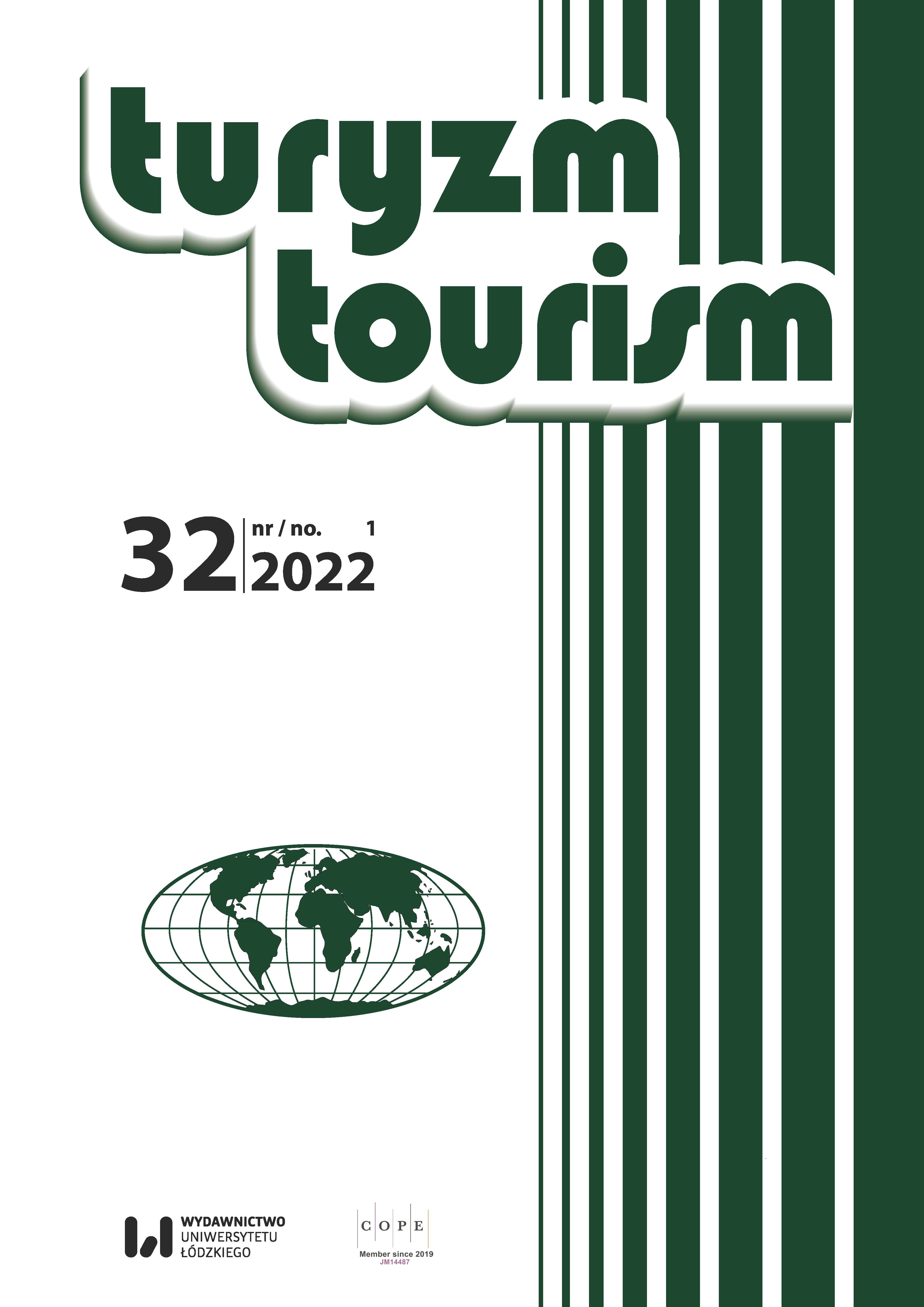Community-based tourism product development based on the community identity of Klong-Lad-Ma-Yom floating market Bangkok, Thailand
DOI:
https://doi.org/10.18778/0867-5856.32.1.03Keywords:
participation, community-based products, floating market tourism, Klong-Lad-Ma-YomAbstract
This article aims to develop products for community-based tourism in order to increase the value of those based on the authentic identity of the Klong-Lad-Ma-Yom floating market. The research results showed that, in 2004, there was the beginning of a fresh coconut juice ice cream business in the Klong-Lad-Ma-Yom floating market. At that time, stories and folktales related to the product were created which helped the local people promote it as a part of community-based tourism; this effort contributed to its fundamental economic development. After the successive waves of the COVID-19 pandemic had subsided, many tourists still came to buy a variety of ready-to-eat food and desserts. Food prices were negotiable and free trials were available. In other words, the Klong-Lad-Ma-Yom floating market was a “negotiable market”, where each local stall had its own designs and businesses run together peacefully. A community-based product could effectively add value to the Klong-Lad-Ma-Yom floating market in a sustainable manner.
Downloads
References
Cohen, J.M., Uphoff, N.T. (1977). Rural development participation: Concept and measures for project design, implementation and evaluation. Ithaca, N.Y.: Cornell University Press.
Google Scholar
Dechakhumphu, K., Homdee, T. (2017). Participatory mechanism of community in public area management of Had Hae, the Mekong River central island. Area Based Development Research Journal, 9 (5), 347–360.
Google Scholar
Jaiborisudhi, W. (2013). A study on One Tambon One Product (OTOP) project and the product discourse. Retrieved from: https://so02.tci-thaijo.org/index.php/easttu/article/view/82708/65715 (2.12.2020).
Google Scholar
Kiertubolpaiboon, O., Pungnirund, B. (2020). Model for strengthening tourism river floating market of Tha Chin River in Thailand 4.0. Journal of MCU Peace Studies, 8 (4), 1352–1366.
Google Scholar
Lamprakhon, J., Cherdbunmuang, S., YenYam, P. (2017). Component of marketing factors and tourist behaviorvisiting Talingchan floating market. Rambhai Barni Research Journal, 11 (2), 58–65.
Google Scholar
Limpremwattana, V., Koolkaew, D. (2018). Component of marketing factors and tourist behavior to visit the Khlong Lad Mayom floating market. Journal of Cultural Approach, 19 (36), 41–50.
Google Scholar
McIntosh, R.W., Charles R.G. (1986). Tourism: Principles, practices, philosophies. New York: Wiley.
Google Scholar
Ministry of Tourism and Sports (2019). Number and income of foreign tourists monthly 2016–2019 (improve the number and income 2019). Retrieved from: https://www.mots.go.th/more_news_new.php?cid=585 (16.12.2019).
Google Scholar
Nunthawong, N. (2016). Factors affecting community participation at Khlong Lat Mayom floating market, Taling Chan, Bangkok. M.A. Hospitality and Tourism Industry Management, Graduate School, Bangkok University.
Google Scholar
Office of the National Economic and Social Development Board (2011a). The Developer King for the Happiness Benefit to the People. Bangkok: Kanpimpretrung Center. Retrieved from: https://www.nesdc.go.th/ewt_dl_link.php?nid=3139 (4.10.2021).
Google Scholar
Office of the National Economic and Social Development Board (2011b). The 11th National Economic and Social Development Plan (2012–2016). Bangkok: Office of the Prime Minister. Retrieved from: https://www.nesdc.go.th/download/article/article_20160323112431.pdf (4.10.2021).
Google Scholar
Phukamchanoad, P. (2016). Guidelines for social network development towards environmental conservation and ways of people’ lives at floating market for sustainable tourism in Taling-Chan District, Bangkok. Bangkok: Suan Sunandha Rajabhat University.
Google Scholar
Phukamchanoad, P. (2019). The model of human capital development for progressing from poverty to “the level of sufficiency: happy e-san” under the sufficiency economy philosophy: A case study of the Upper North Eastern Region 1 local residents. Bangkok: Suan Sunandha Rajabhat University.
Google Scholar
Richards, G. (2009). Tourism development trajectories – from culture to creativity? Paper presented to the Asia-Pacific Creativity Forum on Culture and Tourism, Jeju Island, Republic of Korea, 3–5 June.
Google Scholar
Sangaimsak, P., Sukserm, T. (2018). Customer’s purchasing requirements of creative products from Thai Wisdom. Journal of Rangsit Graduate Studies in Business and Social Sciences, 4 (2), 157–173. https://doi.org/10.14456/jrgbsrangsit.2018.28
Google Scholar
Satjatham, W., Chongsitthiphol, S., Na Thalang, C. (2017). Potential factors to promote sustainable tourism of Bang Nam Pheung Floating Market, Amphoe Phra Pradaeng, Samut Prakan. Dusit Thani College Journal, 11 (1), 275–289.
Google Scholar
Silpajaru, T. (2017). Research and statistical data analysis with SPSS and AMOS. 17th ed. Bangkok: Ordinary Partnership, R&D.
Google Scholar
Downloads
Published
How to Cite
Issue
Section
License

This work is licensed under a Creative Commons Attribution-NonCommercial-NoDerivatives 4.0 International License.










